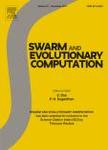版权所有:内蒙古大学图书馆 技术提供:维普资讯• 智图
内蒙古自治区呼和浩特市赛罕区大学西街235号 邮编: 010021

作者机构:Wuhan Univ Sch Math & Stat Wuhan 430072 Peoples R China China Univ Geosci Sch Econ & Management Wuhan 430074 Peoples R China
出 版 物:《SWARM AND EVOLUTIONARY COMPUTATION》 (群与进化计算)
年 卷 期:2013年第8卷
页 面:26-32页
核心收录:
学科分类:08[工学] 0812[工学-计算机科学与技术(可授工学、理学学位)]
基 金:National Natural Science Foundation of China [71171150, 71201146] Social Science Foundation of Ministry of Education [10YJC630233] Fundamental Research Funds for the Central Universities, China University of Geosciences Wuhan [CUG120410]
主 题:Nonlinear bilevel programming problems Hybrid intelligent algorithm Particle swarm optimization Chaos search technique
摘 要:In this paper, a hybrid intelligent algorithm by combining the particle swarm optimization (PSO) with chaos searching technique (CST) is presented for solving nonlinear bilevel programming problems. The bilevel programming is transformed into a single level programming problem by use of the KKT conditions of the lower level problem. Then, the hybrid intelligent algorithm is proposed to solve the transformed problem. Our approach embeds the CST into PSO. Firstly, the algorithm is initialized by a set of random particles which travel through the search space. Secondly, an optimization problem is solved by CST to judge whether the particle is feasible or not. In each iteration, all the feasible particles are ranked in ascending order. Particles in the front of list are updated by PSO, while particles in the end of list are updated by CST. The CST used here is not only to enhance the particles but also to improve the diversity of the particle swarm so as to avoid PSO trapping the local optima. Finally, the hybrid intelligent algorithm is commented by illustrating the numerical results on several benchmark problems from the references. (C) 2012 Elsevier B.V. All rights reserved.